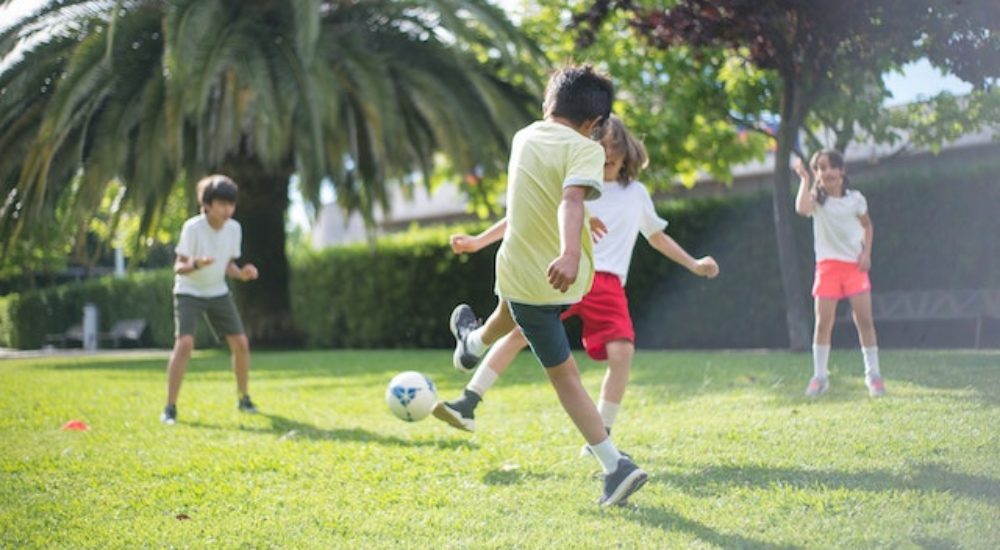If you are a regular BOOST Breakfast Club reader, you may have read my summer article, STEM and Wellness: Colliding Galaxies. The article explores a partnership sparked by a chance meeting at the 2017 BOOST Conference between the Alliance for a Healthier Generation and the National Girls Collaborative Project. Three months later and our educational brief, STEM and Wellness: A Powerful Equation for Equity, is now live! Here is the heart of the brief:
Intentionally blending STEM/STEAM and wellness saves time, makes learning relevant and is essential for equity.
The vision of the Alliance for a Healthier Generation is that all young people deserve a chance to live healthier lives. As the Director of Community Partnerships, I am always in search of individuals to fuel this vision. Adding to the list of amazing people I have met on this journey is Jesse Lovejoy, Director of STEAM Education & the 49ers Museum. Jesse spends his day at Levi’s Stadium in Santa Clara, connecting K-8 students with free STEAM learning experiences through the game of football. Since it began in 2014, Jesse’s program has reached 150,000 students in the Bay Area.
Establishing the Connection
So, what is the connection between STEAM (science, technology, engineering, arts and math) and building healthier communities? Here is what Jesse had to say,
“Physical activity and STEAM education might not immediately seem like a logical combination, but in our experience, we’ve seen an amazing connection between these academic subjects and the ability to inspire young people to further define their passions and future career opportunities. In the case of the 49ers and our approach to STEAM, we look at the game of football and how it’s influenced by the fundamental principles of science, physics, and geometry. Connecting these concepts to physical activities children love can be the ultimate common denominator.”
Thanks to the America After 3PM report, we know parents want physical activity opportunities for children in afterschool. So, how can we use physical activity to encourage kids to ask questions about why STEAM matters, why it’s relevant to their lives and why it’s cool? How do we then tie everything back to national standards and quality improvement? According to Jesse, the question of “why it’s cool” is where sports can help program leaders engage kids and families. From there, the connections grow.
Making it Intentional
Fostering these linkages has to start with purpose. Here’s advice from Jesse.
“One of the things that became crystal clear to us at the 49ers when we rolled out our program was that we had to feed a child’s need to be active in order for them to see us and the larger learning experience.”
To bring this to life, Jesse created the “Movement Lab” – where kids practice non-contact cooperative activities that align to the game of football. All of the physical activities have a STEAM overlay. Here is an example. Kids run the 40-yard dash, just like players do in the NFL. Then they take an average of their times. Next, the kids run the same 40-yard dash while wearing football equipment. The group then discusses their observations based on the two different runs. Jesse’s team uses those observations to introduce concepts like aerodynamics and physics. Active kids learn better so this intentional blending of physical activity with sports and STEAM concepts has been a winning combination.
Looking Ahead
As we explore on page 4 of STEM and Wellness: A Powerful Equation for Equity, both STEM and wellness are critical to workforce development. “To establish a diverse and healthy workforce well prepared for the careers of tomorrow, imbalances in STEM and wellness must be addressed today.” Jesse and his team work closely with the Santa Clara Unified School District to identify students for the program and provide transportation if needed.
The relationships formed during these programs matter too and a new report from The Aspen Institute underscores the importance of social and emotional learning. Jesse’s program does this by focusing on 21st Century learning skills, including the 4Cs. Staff have frequent discussions with both students and each other about how feelings impact what a child can learn and how active they are.
Recommendations
Afterschool leaders are master community-builders, in particular, 21st Century funded sites. Partnering with the sports community may seem daunting. Here are four tips to consider.
- Align the experience with learning standards. Ground physical activity in academic achievement. If your program does STEAM well, utilizing the Healthy Out-of-School Time Framework can link your program to the broader healthy afterschool movement.
- Focus on fun and amplify youth voice! Dialogue with students as you plan and test concepts. Engage youth leaders in authentic decision-making and activity selection.
- Find a sports partner that truly appreciates learning. Be sure your common goal is to educate and inspire, not just brand and create public relations opportunities.
- Think about how physical activity and sports can be a window into just about any subject. A little creativity goes a long way.
We hope this article has inspired you to think about STEAM, wellness, and partnerships in a new way. If you are already blending the concepts, share your story and give us a shout on Twitter using @hatchdw and @jesselovejoy1.
To learn more about the 49ers STEAM programming, check out Pro sports can connect kids to afterschool STEAM learning. To explore more ideas for partnerships with sports and exercise professionals, join an upcoming Twitter chat with the American Council on Exercise and the Alliance for a Healthier Generation on November 8th.
*A special thank you to the Partnership for 21st Century Learning who introduced me to Jesse and 49ers STEAM Education.
For breakfast, I had coffee, an apple, and some peanut butter.
*Photos courtesy 49ers STEAM Education
Author: @danielh
